I dedicate February to Themis, the Greek goddess of divine order. Last year, I journeyed to Greece and was fortunate to visit three sacred sites with links to Themis. Last time, I wrote about Delphi, where Themis served as the first or second Oracle before Apollo claimed (or was gifted) the site. This blog entry is about Dodona.
Nestled amidst the picturesque landscapes of Epirus in northwestern Greece, Dodona was the oldest Hellenic oracle and considered second only to the Oracle of Delphi.
No systematic prehistoric research has been carried out in Epirus, and no traces of Neolithic settlements have been found at Dodona. The earliest finds are Mycenean pottery and bronze weapons from no earlier than the 15th century BCE. So, scholars theorise that the cult at Dodona began in the Early or Middle Bronze Age (somewhere between 2600 BCE and 1500 BCE) and arrived with the Thesprotians, one of several ancient tribes of Epirus and the one that first controlled the Dodona oracle. By about 1200 BCE, the cult of Zeus was established at Dodona. But below the stratum of the cult of Zeus is another earlier stratum showing evidence of a chthonic cult connected with the “Great Goddess”.
The Earth Mother and the Sky God
The Great Goddess at Dodona had her abode in the roots of a great oak tree. Three priestesses, prophetesses called Peleiades (“doves”), served the cult of the earth goddess. When Zeus arrived, this new sky god and the ancient earth goddess became a new power couple. He became known as Zeus Naios. Rather than being identified with Zeus’s more usual consort, Hera, the goddess at Dodona, was named Dione, “Goddess”.
After Zeus joined and partly supplanted Dione, the sacred oak became associated with him. Bronze tripods with cauldrons that touched each other surrounded the oak tree. The soothsayers of Zeus, the Selloi who slept on the ground and didn’t wash their feet, interpreted the god’s will by lying down around the sacred oak tree and interpreting the melodic sounds of the cauldrons hit by chains and falling acorns, the rustling of the leaves, bronze wheels hanging from its branches (like wind chimes), and the movement of doves.
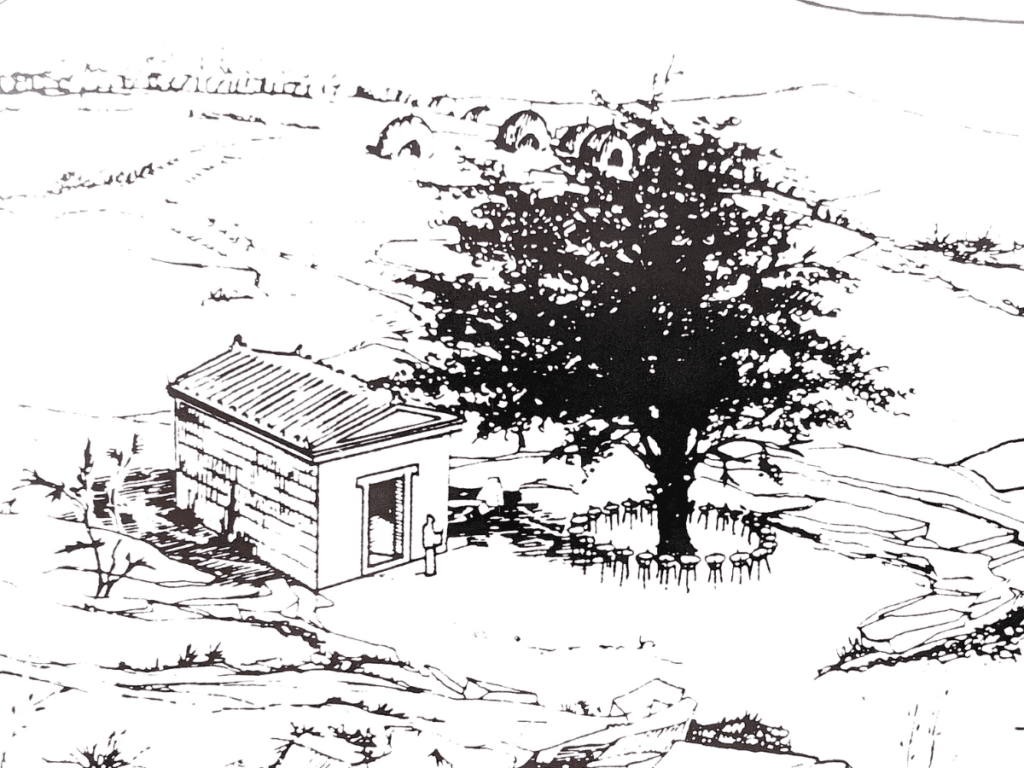
It’s not clear if the Selloi and Peleiades acted as oracles in the same way and at the same time. Homer mentioned the priests but not the priestesses. Herodotus mentioned the priestesses but not the priests. From the fifth century, priestesses managed the sanctuary, which may have resulted from a reorganisation following political shifts and control of Dodona passing from the Thesprotians to the Molossians.
Visiting Dodona
Dodona was the first sacred site I visited in Greece and it was sublime. Perhaps because it’s over 400 km from Athens and almost 270 km from Thessaloniki, Greece’s second-largest city, it doesn’t seem to get many tourists. Most tourists visit Delphi, which is only a 2.5-hour drive from Athens and is more visually spectacular.
Dodona was a religious and oracular centre for most of its existence for Greece’s northern tribes. Compared to Delphi, Dodona is smaller, feels more intimate, and connected to people.

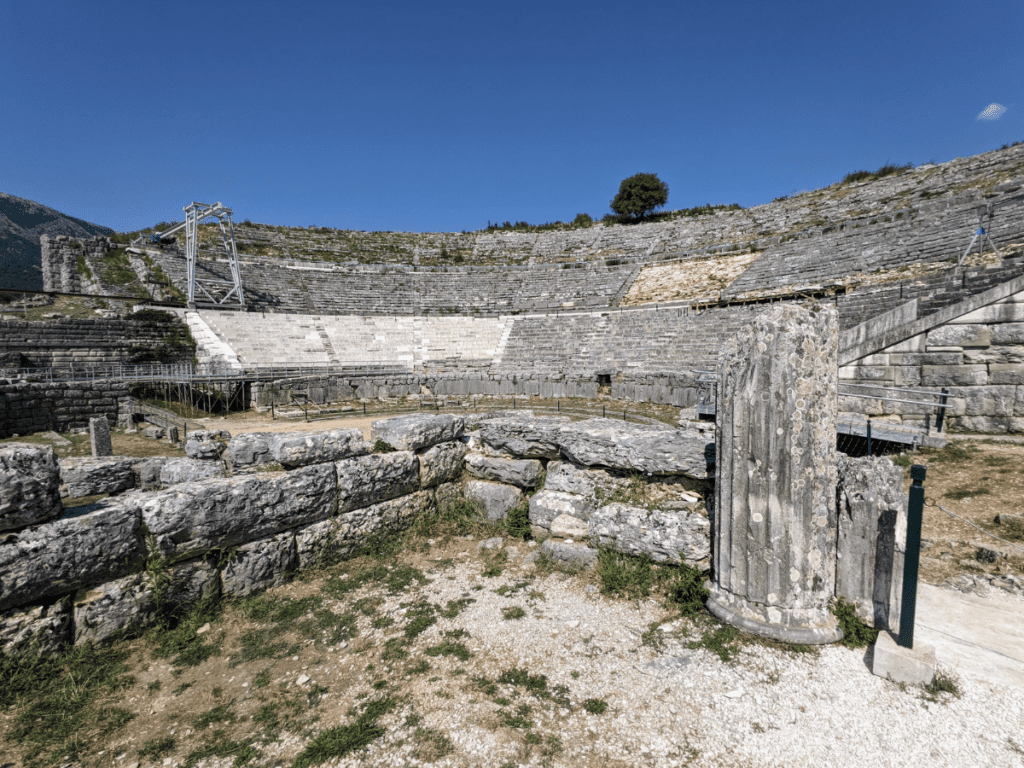
One of the first structures you see at Dodona is the theatre. It was built at the beginning of the 3rd century BCE for the festival of the Naia in honour of Zeus Naios, probably every four years. The theatre could hold 17,000 spectators and staged tragedies, comedies, and drama contests. In the centre of the orchestra, you can see the base of the thymele, the altar of Dionysus.
The Romans converted the theatre into an arena and introduced gladiatorial matches. Excavations show that bulls and boars, associated with the cult of Zeus, were the main animals used here.

Past the stadium is the foundation of a small building called the “House of the Priest (?)”. Little is known about this building, but its location, construction, and findings indicate it was important and someone lived there. The bouleuterion is next to it. A bouleuterion is a large council or assembly house, where its members conducted business. The prytaneion, another large official building (what’s left of it) is also in this area.
The sanctuary precinct is past the administration buildings and begins with the Temple of Aphrodite. According to Homer, Aphrodite is the daughter of Zeus and Dione.
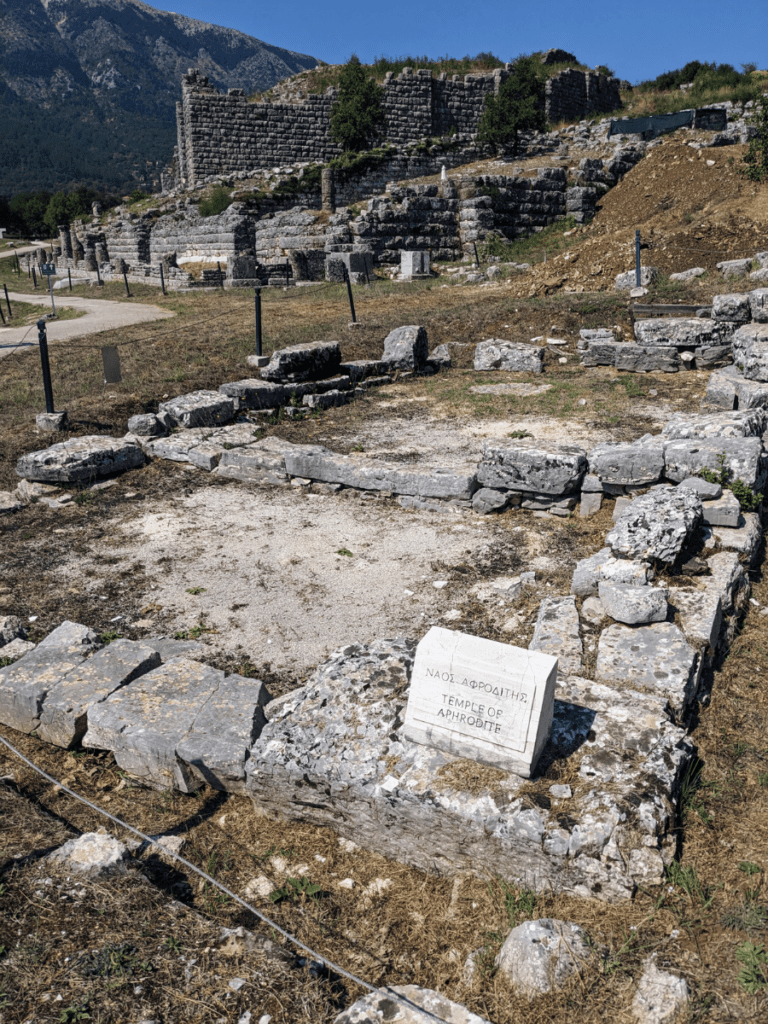
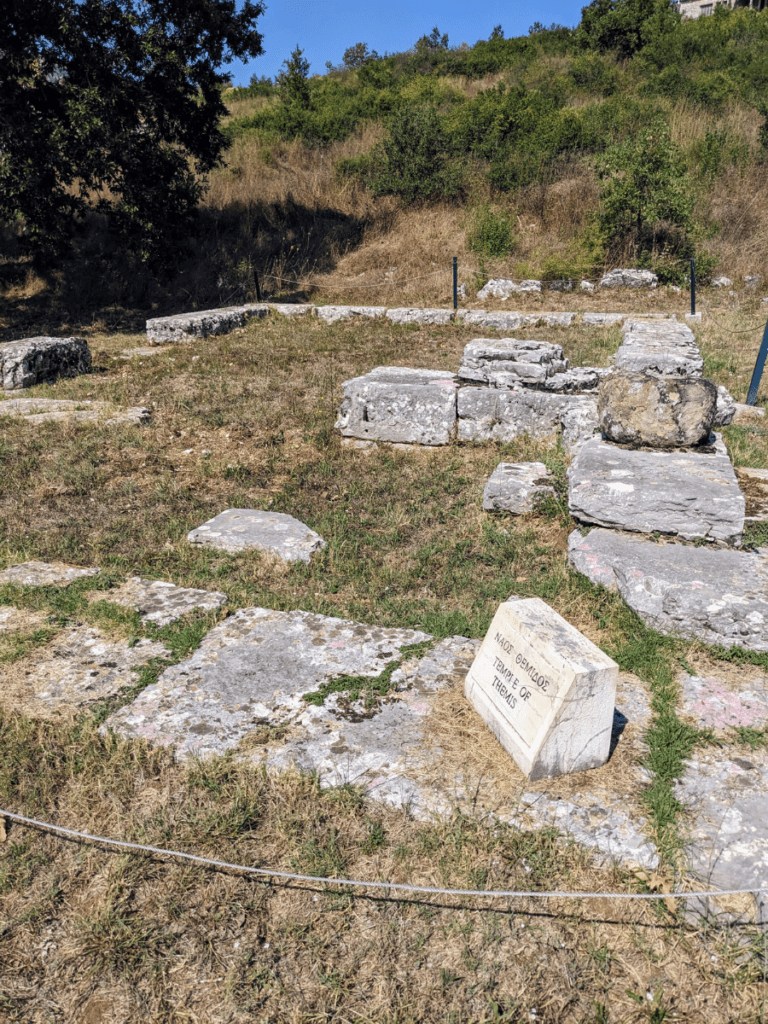
At Dodona, Themis was understood to be an oracular goddess and seems to have been connected to the old cult, like at Delphi. She received regular sacrifices, and a lead oracular inscription mentions Zeus, Dione, and Themis as Naian gods, forming a trinity. Themis’s temple is on one side of Zeus’s, and Dione’s is on the other.
Here at Dodona, I first connected with Themis on Greek land. I made a humble water offering and recited my prayer to her. As the words left my mouth, a few butterflies appeared and circled me.
I didn’t associate butterflies with Themis. As far as I know, there’s no historical context for that. Still, I later learned that the goddess lends her name to the Euphaedra themis (among others), a common butterfly found in several African countries, including Benin and Nigeria, where my ancestors come from. Of course, the butterflies I saw at Dodona were not the common Themis forester, but there are no coincidences, only ripples and serendipity.
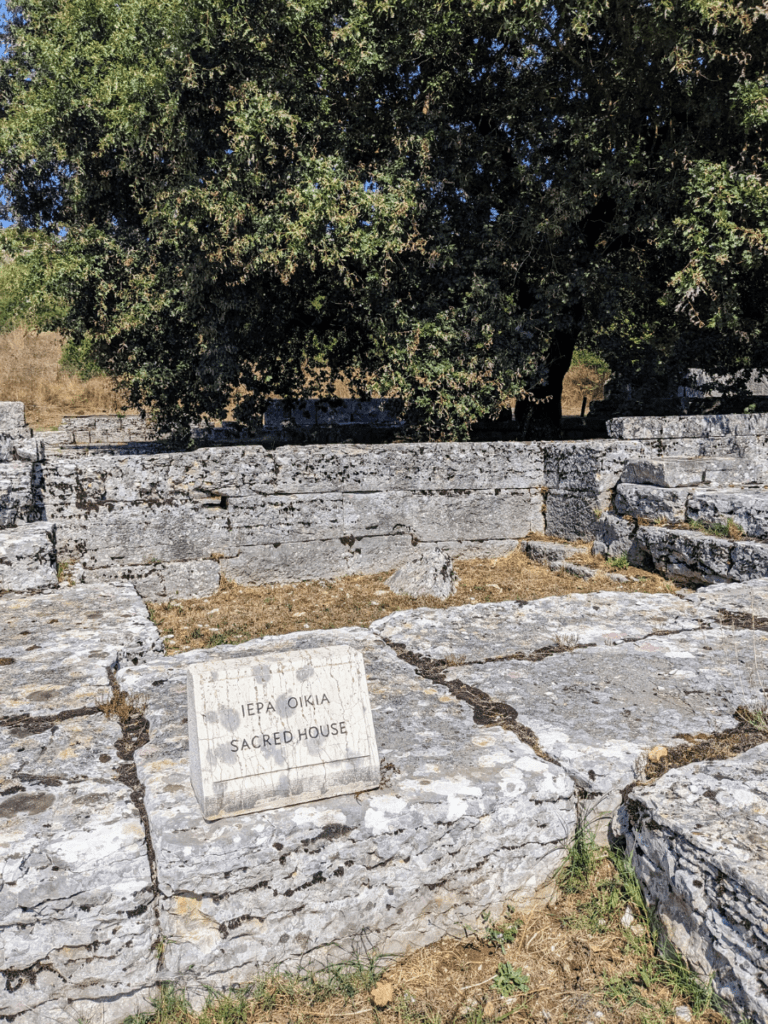
The Hiera Oikia, or Sacred House, was the sanctuary of Zeus, consisting of a small temple and the sacred oak tree. It had at least four building phases and saw attacks, looting, demolition, burning, rebuilding, and refurbishing. When Emperor Theodosius closed all pagan temples and banned all pagan religious activities in 393 CE, the sacred oak tree was cut down and uprooted in search of treasure. The oak tree seen here in the background indicates the approximate position of the ancient one.
When I read or think about the destruction of pagan temples, I feel angry and sad, but I discovered something joyous here at Dodona. The oak tree is full of little papers with prayers and handwritten wishes in various languages. I recognised English, Spanish, Italian, French, German, and, of course, Greek. My husband and I also left our prayers in the sacred oak tree.
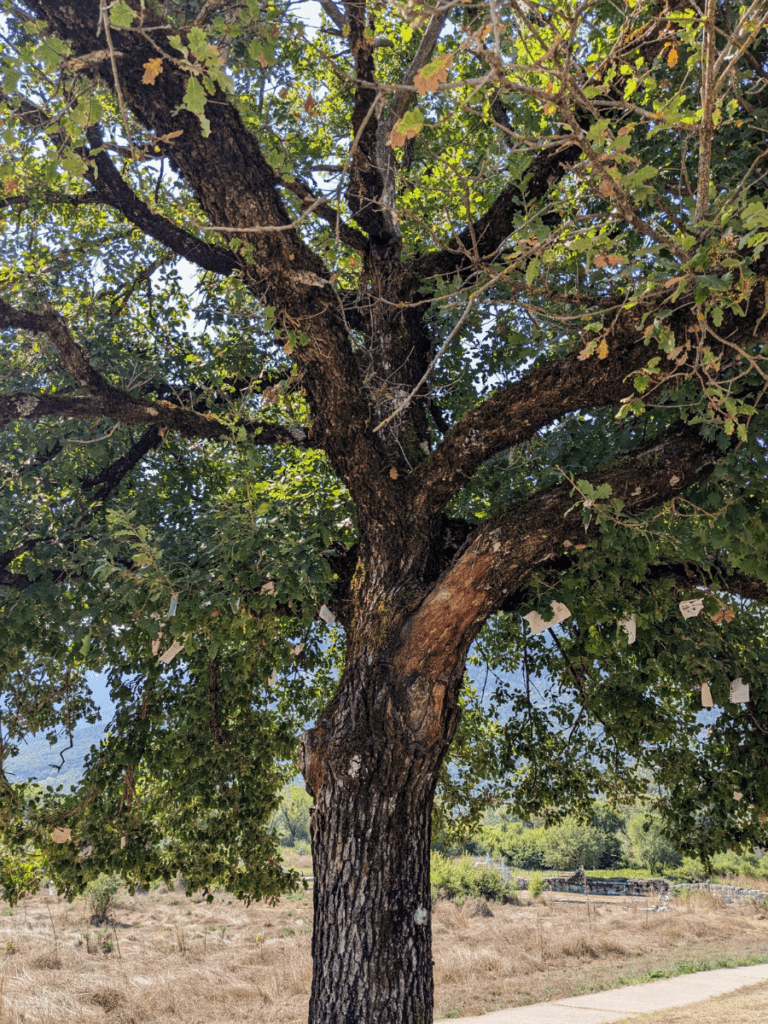
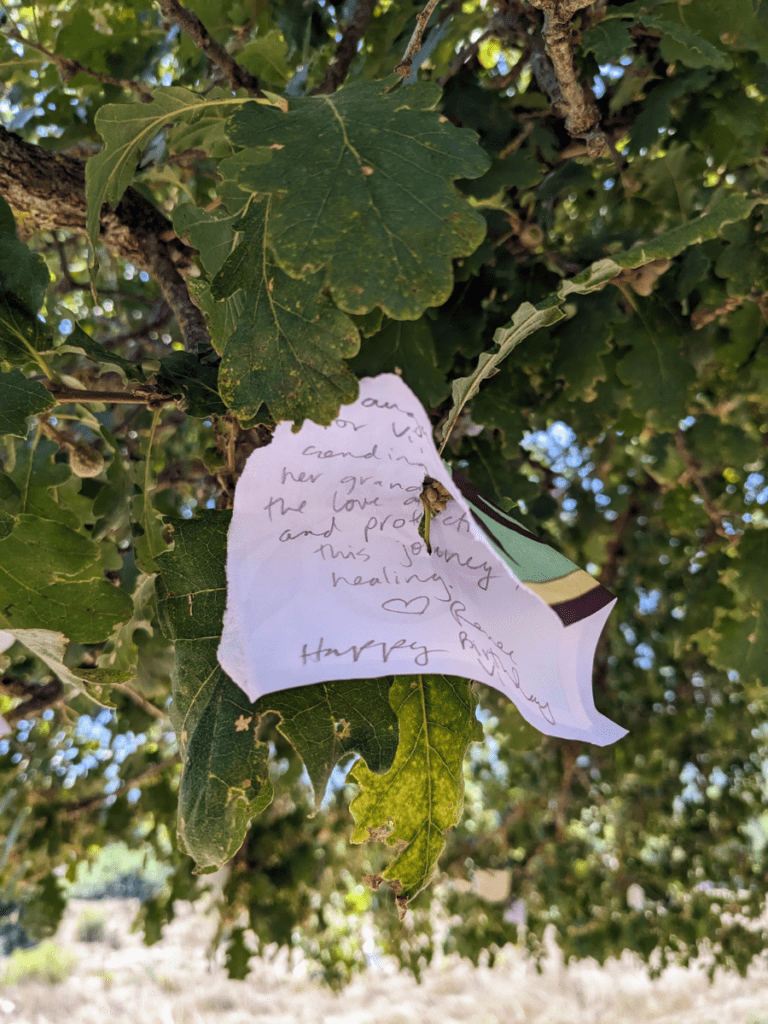
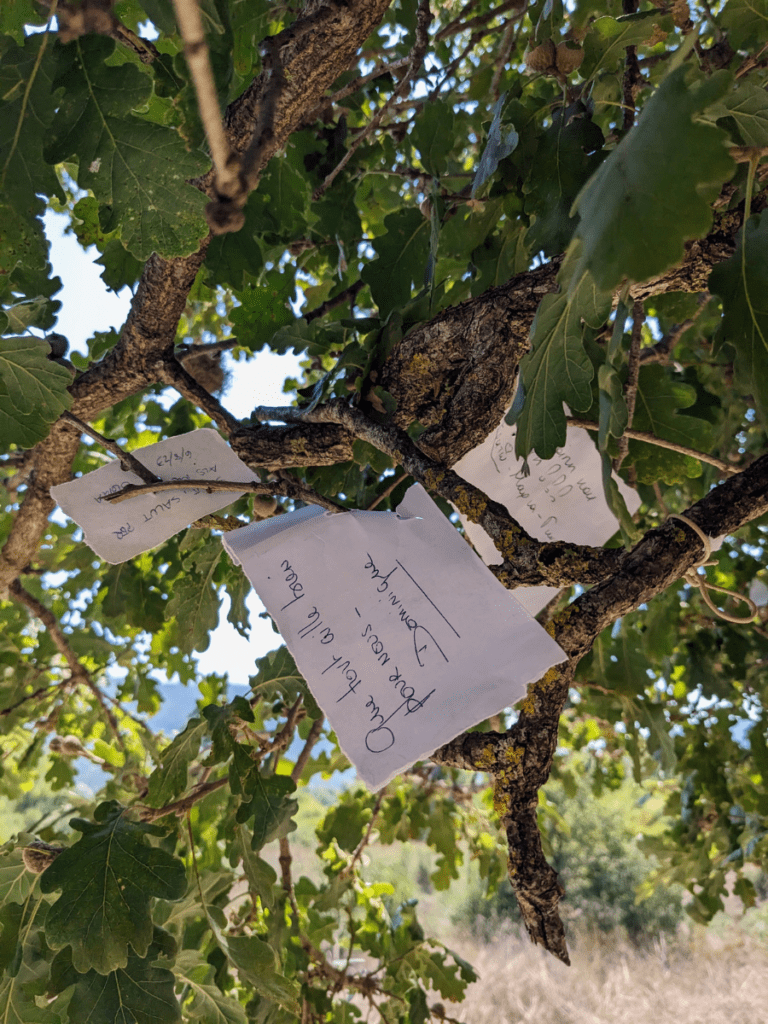
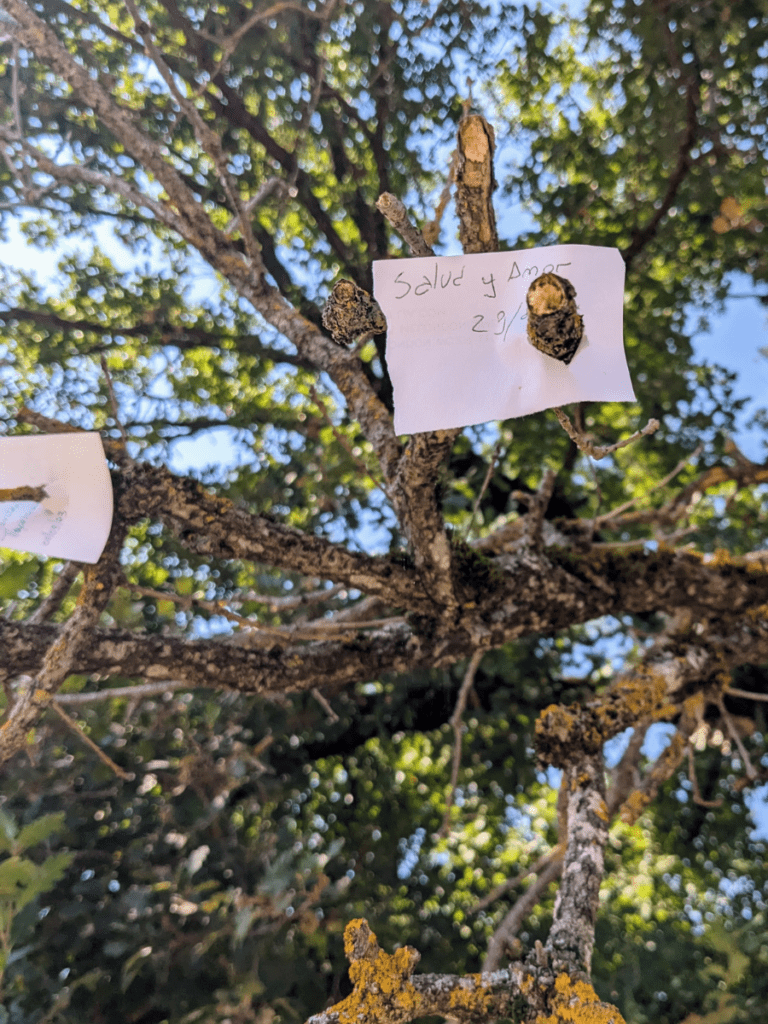
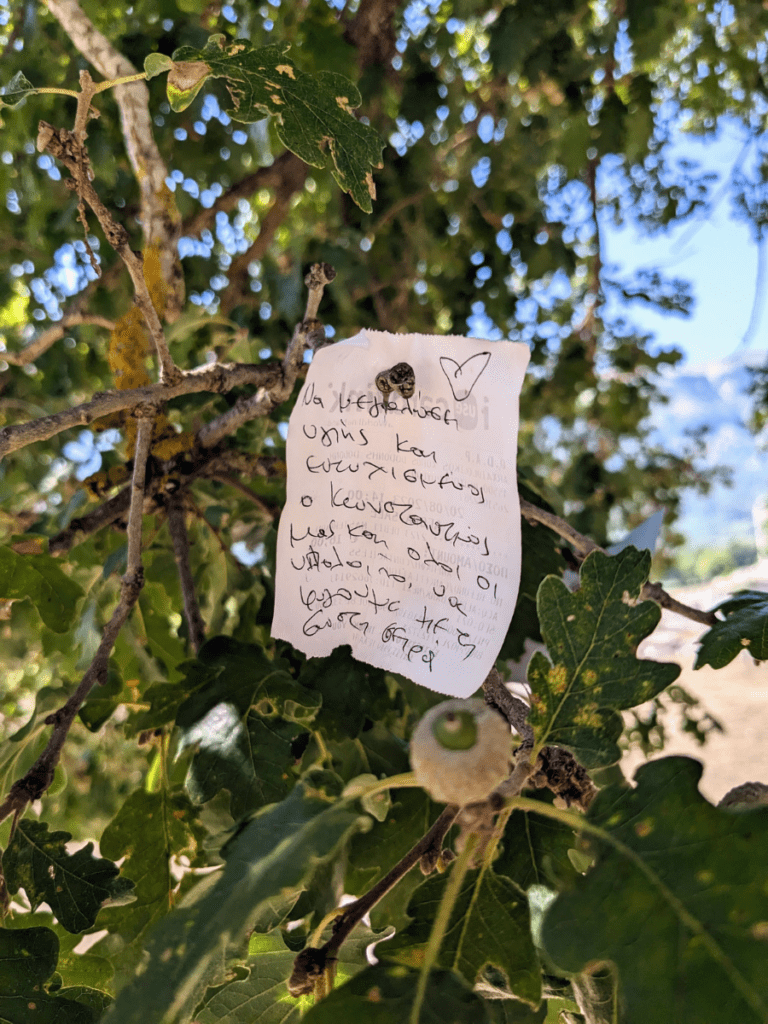
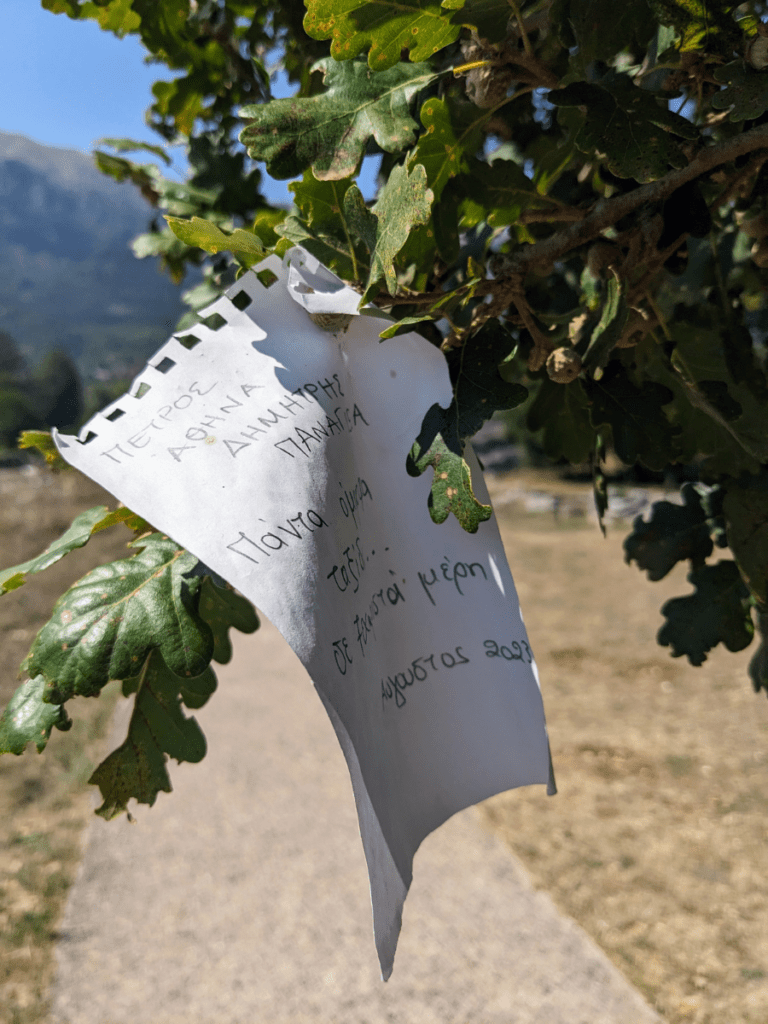
The New Temple of Dione and the Old Temple behind it are next to the Temple of Zeus. The Old Temple was in place by 330-324 BCE, and the New Temple was built in a different spot after the burning of the Sanctuary in 219 BCE to conform to the new layout.
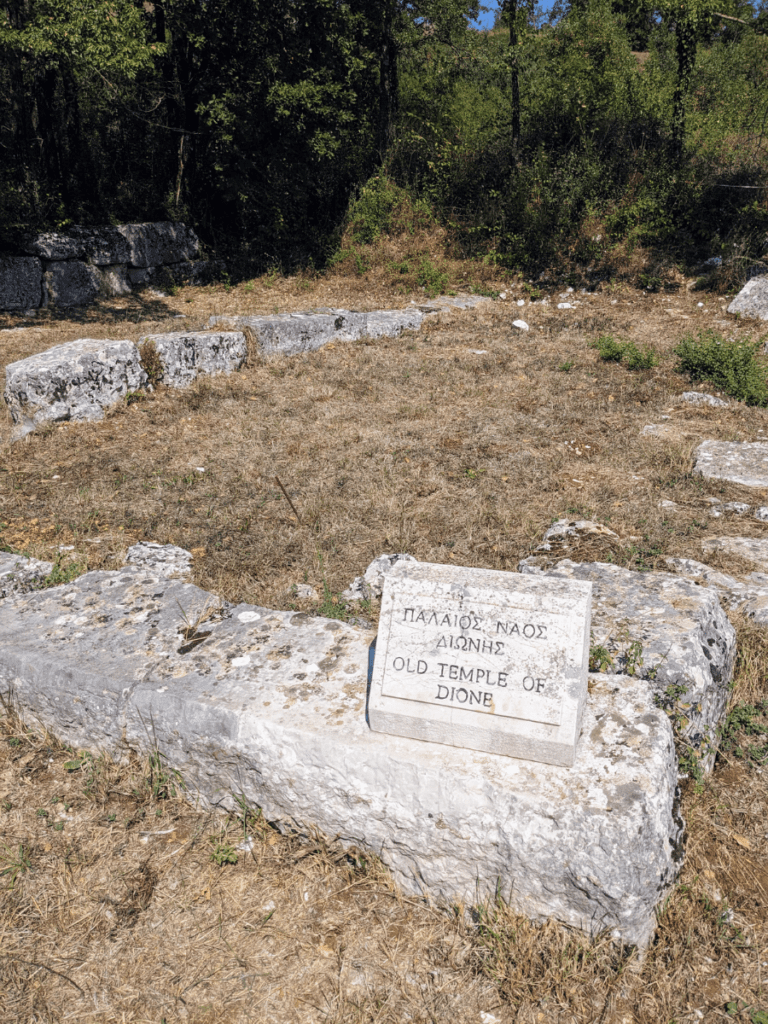
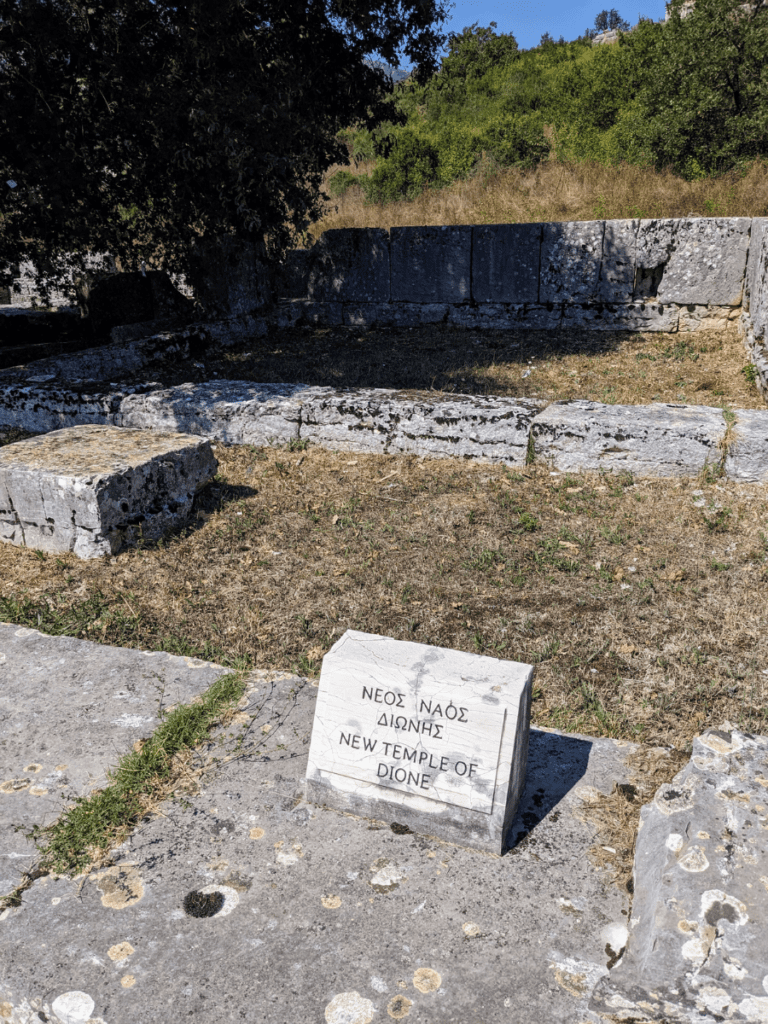
The ruins of a Christian Basilica, built with stones scavenged from the ancient ruins, and the Temple of Heracles lie just beyond the Temples of Dione. Why Heracles? The Argead dynasty, an ancient Macedonian royal house, claimed to be descended from him.
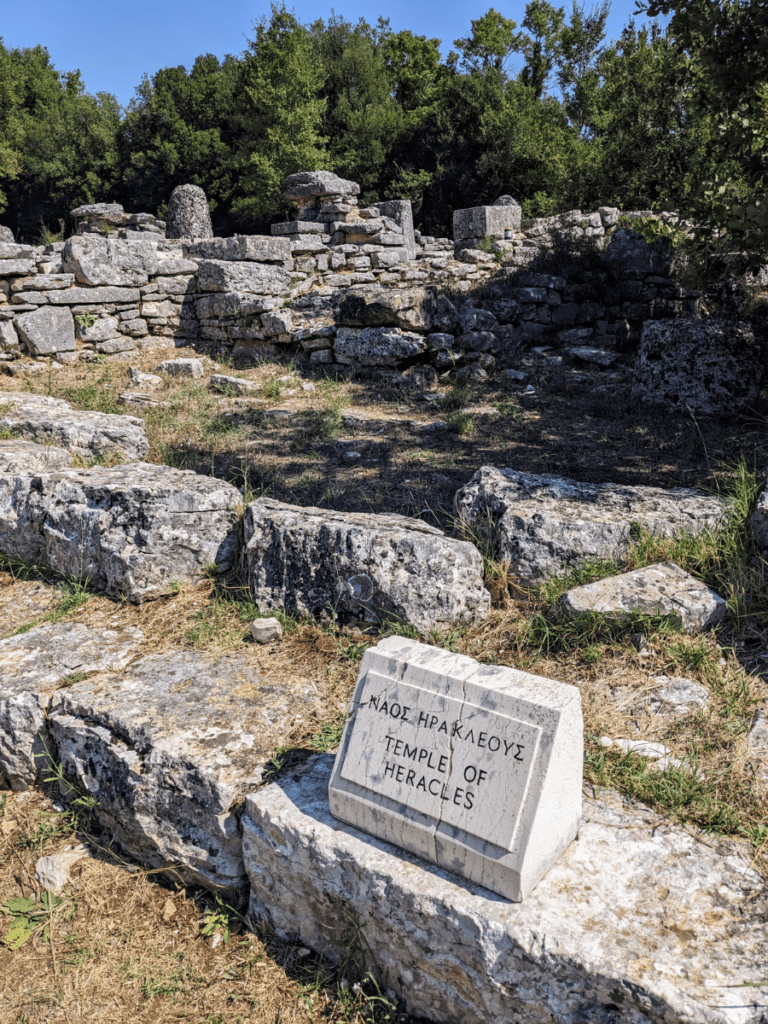
Achilles prayed to “High Zeus, lord of Dodona,” in the Iliad. In the Odyssey, Odysseus visited the oracle to seek Zeus’s advice about whether to enter Ithaca, his home, openly or secretly. Jason’s ship, the Argo, contained an oak timber from Dodona, which made it able to speak with a human voice and prophecy. Dodona, influential and legendary, was the religious capital of Epirus, the site of festivals featuring drama in its theatre, athletic games, and musical contests. It is sad to see it in ruins (excavations and modest restorations are ongoing).
Dodona may not be as grand as Delphi, but it has its beauty, wonders, and surprises. While the ruins are roped off and the site has its guardians, like at all archaeological sites, I felt close to Dodona. It may have been the lack of tourists and the quiet that results from that. It was easier to listen at Dodona than it was at, say, the Parthenon. And it was beautiful to see the prayers and wishes in the oak, which, while not the original ancient tree, remains sacred.

